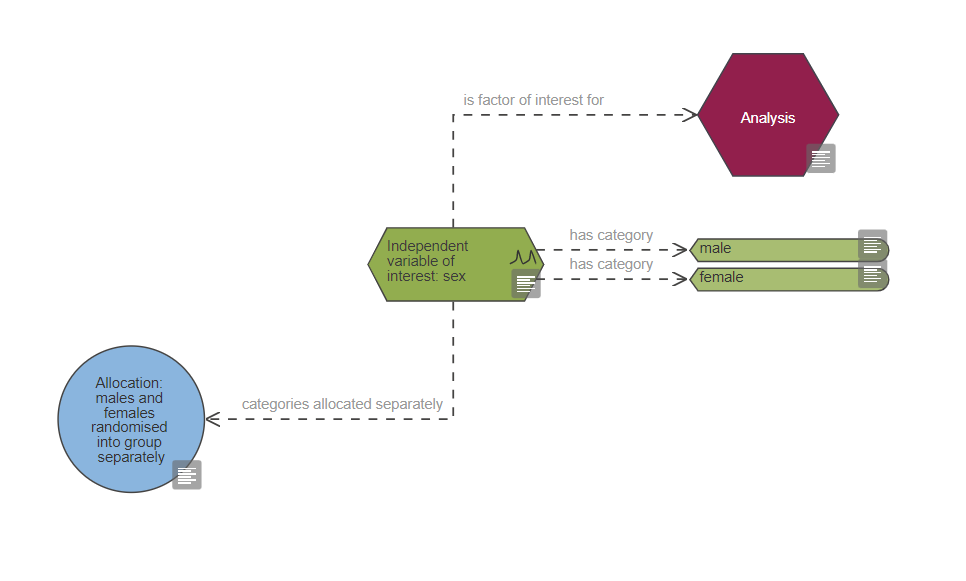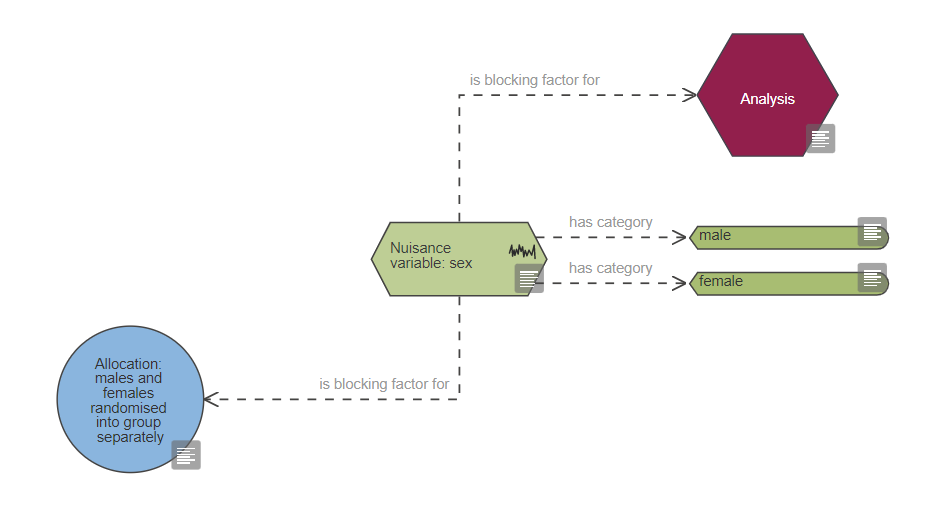This independent variable of interest is included in the randomisation but is not included in any analysis
An independent variable of interest node represents a parameter specifically manipulated to test your hypothesis. You have connected your independent variable of interest to your allocation node but not to an analysis node. Connecting your independent variable of interest node to the allocation node suggests that you want the categories of this independent variable of interest distributed evenly between the groups shown on your diagram. This is only appropriate for variables defining an animal characteristic (e.g. strain or sex). In order to use this variable to test your hypothesis (e.g. to investigate whether the effect of the intervention depends on that animal characteristic) it must be a factor of interest in your analysis, this means it should be connected to an analysis node.
If this node represents something that you want to randomise separately (e.g. sex or strain) but is not a part of your hypothesis, you should represent it as a blocking factor, using a nuisance variable node.
If this independent variable is not an animal characteristic but is something you are testing as part of your hypothesis, disconnect it from the allocation node, and ensure that all experimental groups resulting from the allocation are represented explicitly on your diagram. You should then disregard the rest of this prompt and critique your diagram again to get updated feedback.
If this is a factor of interest in your analysis
If you do wish to use this animal characteristic as an independent variable of interest in your analysis, then you must connect it to your analysis node as well as the allocation node. By including your independent variable of interest as a factor in the analysis, you are indicating that you also want to investigate whether the effect of the intervention depends on that animal characteristic.

If this factor is not a factor of interest in your analysis
If this node represents an animal characteristic that you want to randomise separately (e.g. sex or strain) but you are not interested in the effects of this on your outcome measure, you should represent it as a blocking factor. To do this, delete the independent variable of interest node and add a nuisance variable node and connect it to the variable category nodes that the independent variable of interest was connected to. Then connect the nuisance variable node to both the allocation and the analysis nodes using the link ‘is blocking factor for’.

By including this as a blocking factor in your allocation you are ensuring that this factor is evenly distributed between your groups. By including the blocking factor in your analysis you are taking account of the variability introduced by this factor, increasing the chances of detecting the effect of the intervention you are interested in (your independent variable of interest).
If you modify the diagram, please critique it again.